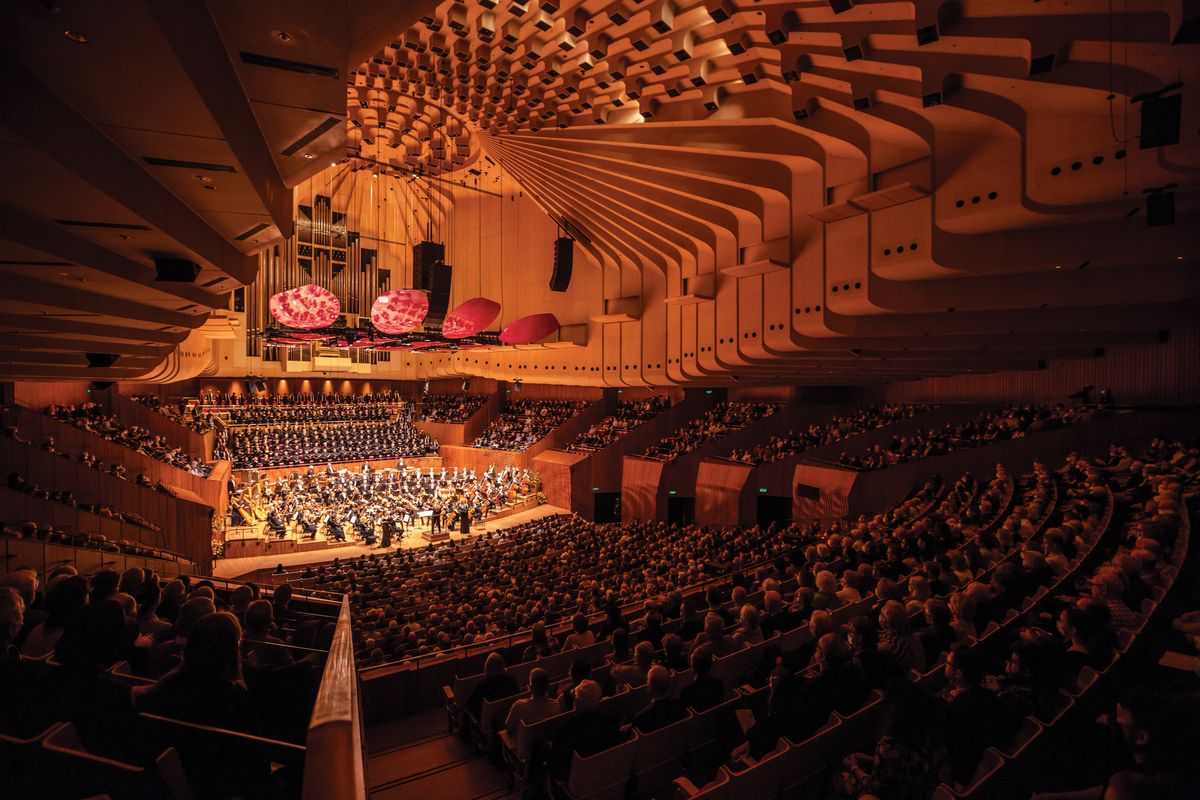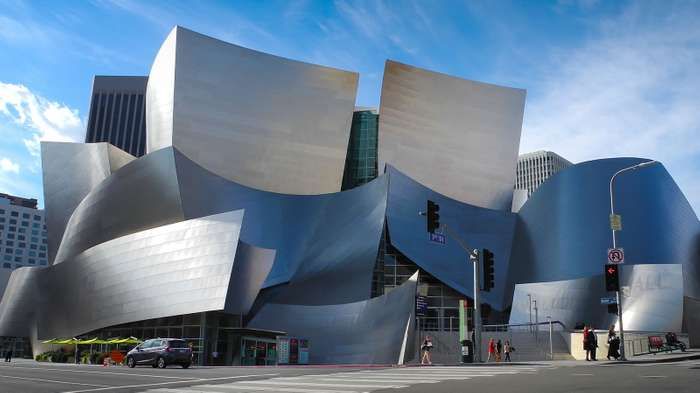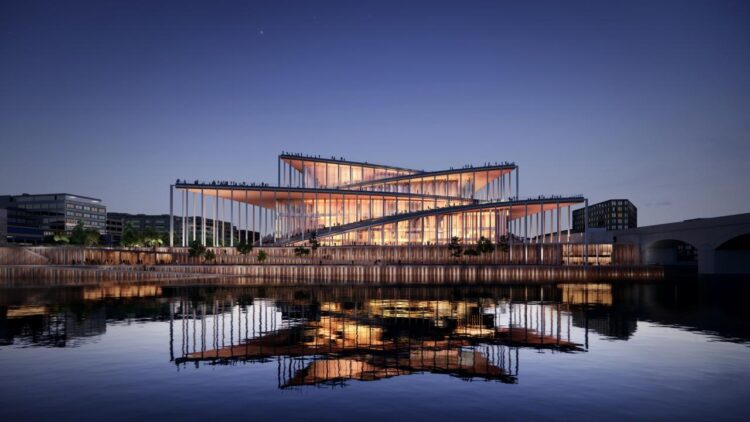The live music industry, an enduring cornerstone of human culture, is on the cusp of a profound transformation. What once defined a “concert experience”—a fixed stage, static lights, and a singular performance—is rapidly evolving into something far more dynamic, immersive, and interactive. Driven by technological innovation, shifting audience expectations, and the relentless pursuit of novel sensory engagements, the future concert experience promises a fusion of artistry and cutting-edge technology that transcends the traditional boundaries of sight and sound. This comprehensive article delves into the exciting innovations poised to redefine live entertainment, exploring the technologies that are making these changes possible, the benefits they offer to artists and audiences alike, the challenges that must be navigated, and the visionary trends shaping the concerts of tomorrow.
Redefining the Concert

Historically, a concert’s primary focus was the auditory delivery of music. While sound remains paramount, the future concert experience embraces a multi-sensory approach, aiming to transport attendees into truly immersive worlds. It’s about crafting an environment where the audience doesn’t just watch a performance but becomes an integral part of a living, breathing spectacle.
Key elements poised to redefine the concert experience include:
A. Immersive Visual Spectacles:
A.1. Volumetric Video & Holography: Moving beyond flat screens, artists can project three-dimensional images and holographic performers, allowing for dynamic interactions with the stage and audience. This opens possibilities for virtual guest appearances or even bringing back iconic artists.
A.2. Advanced Projection Mapping: Utilizing complex algorithms and high-powered projectors to turn any surface (stages, buildings, natural landscapes) into a dynamic canvas for stunning visual narratives that sync perfectly with the music.
A.3. LED Innovation: Ultra-high-resolution, flexible, and transparent LED screens integrated into stages, floors, and even audience areas, creating fluid visual environments that react in real-time.
A.4. Drone Light Shows: Swarms of synchronized drones equipped with lights and sometimes projectors, choreographing intricate aerial ballets that transform the sky above outdoor venues into an extension of the performance.
B. Enhanced Auditory Immersion:
B.1. Spatial Audio (3D Audio): Moving beyond traditional stereo or surround sound, spatial audio systems allow sound engineers to place individual instruments or vocals in precise locations within a 3D soundfield, making it feel like sound is coming from all around the listener. This greatly enhances realism and immersion.
B.2. Personalized Audio Experiences: Technologies that could potentially allow individual audience members to customize their audio mix (e.g., higher vocals, more bass) or even filter out crowd noise using advanced personal audio devices or adaptive sound systems.
C. Interactive Audience Engagement:
C.1. Real-time Audience Participation: Allowing audience members to influence visual effects, lighting, or even musical elements through mobile apps, wearables, or motion tracking.
C.2. Gamification: Integrating game-like elements, challenges, or augmented reality overlays that encourage audience interaction and collective experiences.
C.3. Biometric Feedback Integration: Potentially using audience biometric data (e.g., heart rate, excitement levels, with consent) to dynamically adjust elements of the show, creating a uniquely responsive experience.
D. Multi-Platform Access and Hybrid Events:
D.1. Hybrid Live/Virtual Concerts: Seamlessly blending physical attendance with high-quality virtual access, allowing global audiences to participate through immersive streaming platforms.
D.2. Metaverse Integration: Performing concerts within virtual worlds (e.g., Roblox, Fortnite, Decentraland), offering unique avatar interactions, digital merchandise, and community building.
D.3. Personalized Fan Experiences (Virtual): Allowing remote viewers to choose camera angles, interact with other fans in virtual lounges, or access exclusive backstage content.
E. Sensory Enhancements Beyond Audio-Visual:
E.1. Haptic Feedback: Integrating vibrations into seating or wearable devices to allow audiences to “feel” the music, particularly bass frequencies.
E.2. Scent and Atmospheric Effects: Incorporating controlled release of scents, fog, mist, or temperature changes to heighten the emotional impact and immersion.
These elements collectively point towards a future where concerts are not just performances but highly curated, multi-sensory journeys that blur the lines between reality and imagination.
Technological Innovations Powering the Transformation

The ambitious vision for future concert experiences relies heavily on rapid advancements across multiple technological domains. These innovations are becoming more affordable and scalable, making futuristic concepts a present-day reality.
A. Artificial Intelligence (AI) and Machine Learning (ML):
A.1. Real-time Content Generation: AI can dynamically generate or adapt visuals, lighting patterns, and even subtle musical elements in response to a performer’s improvisations or audience energy.
A.2. Personalized Experiences: AI algorithms can analyze audience data (with privacy safeguards) to tailor visual cues, sound mixes, or interactive elements to individual preferences, enhancing engagement.
A.3. Crowd Management and Safety: AI-powered analytics can optimize crowd flow, detect potential safety hazards, and enhance security in large venues.
B. Augmented Reality (AR) and Virtual Reality (VR):
B.1. AR Overlays: For live attendees, AR can overlay digital graphics, artist information, lyrics, or interactive elements onto the real-world view through smart glasses or phone screens.
B.2. VR Concerts: Fully immersive virtual concerts where users embody avatars, interact with other fans, and experience performances in fantastical digital environments, transcending physical limitations.
B.3. Mixed Reality (MR): Blending AR and VR, allowing virtual elements to interact seamlessly with the physical stage and performers, creating incredibly dynamic hybrid realities for both live and remote audiences.
C. High-Bandwidth Connectivity (5G and Beyond):
C.1. Seamless Streaming: Ultra-low latency and high-speed data transmission are critical for delivering high-resolution video, spatial audio, and interactive content to a global audience, whether live or virtual.
C.2. Real-time Processing: Essential for AI-driven dynamic visuals, synchronized drone shows, and instant audience feedback integration without noticeable delays.
D. Advanced Projection and Display Technologies:
D.1. LED Walls and Floors: Continuous innovation in LED technology yields higher resolutions, greater flexibility (bendable, transparent), and brighter outputs, allowing for unprecedented visual integration into physical spaces.
D.2. Laser Projection: High-powered lasers create intricate patterns, volumetric effects, and stunning aerial displays that react to music and audience.
D.3. Holographic Displays: Progress in holographic projection techniques (e.g., using specialized screens or mist) makes realistic 3D imagery more viable for live stages.
E. Sensors and Biometric Technologies:
E.1. Motion Tracking: Advanced motion capture systems track performers’ movements to drive real-time visual effects or virtual avatars.
E.2. Audience Biometrics (Opt-in): Wearable sensors (with strict privacy protocols and user consent) could potentially gather aggregate data on audience heart rates or excitement levels, feeding into dynamic show elements.
F. Blockchain and NFTs:
F.1. Digital Ticketing: Secure, verifiable digital tickets that reduce fraud and provide enhanced access control.
F.2. Fan Engagement and Collectibles: Non-Fungible Tokens (NFTs) offer new avenues for artists to create exclusive digital merchandise, unique fan experiences, and even royalties from secondary market sales, strengthening fan-artist connections.
F.3. Decentralized Fan Communities: Blockchain can power decentralized autonomous organizations (DAOs) for artists and their fans, allowing for more direct engagement and shared ownership.
These technologies, when skillfully combined, form the bedrock for realizing the ambitious vision of future concert experiences, pushing the boundaries of creativity and audience engagement.
Benefits for Artists, Audiences, and the Industry
The evolution of concert experiences offers a myriad of advantages that benefit all stakeholders in the music ecosystem.
A. For Artists:
A.1. Unleashed Creative Freedom: New technologies provide an expanded palette for artistic expression, allowing for performances that seamlessly blend music with intricate visual narratives, interactive elements, and immersive environments.
A.2. Global Reach and Engagement: Hybrid and virtual formats allow artists to connect with a vastly larger, global audience beyond the physical capacity of a venue, expanding their fan base.
A.3. New Revenue Streams: Digital merchandise (NFTs), virtual concert tickets, and premium virtual experiences open up diversified income opportunities.
A.4. Enhanced Fan Connection: Interactive elements and personalized experiences deepen the bond between artists and their audience, fostering greater loyalty.
A.5. Longevity and Archiving: High-fidelity digital recordings of live shows become valuable assets for future distribution, allowing for unique re-releases or “director’s cuts.”
B. For Audiences:
B.1. Unprecedented Immersion: Multi-sensory experiences, spatial audio, and dynamic visuals create deeply engaging and memorable events that transcend traditional concerts.
B.2. Accessibility: Virtual and hybrid formats provide access to concerts for individuals with disabilities, those in remote locations, or those who cannot afford travel, democratizing live music.
B.3. Personalized Experiences: The potential for tailored audio, visual, or interactive elements means each attendee can have a unique and optimized experience.
B.4. New Ways to Connect: Virtual venues and interactive features allow fans to connect with each other globally, building communities around shared musical passions.
B.5. Exclusive Content and Ownership: NFTs and digital collectibles offer a new form of engagement and ownership, providing unique fan artifacts.
C. For the Industry (Promoters, Venues, Tech Providers):
C.1. Diversified Revenue Models: New ticketing tiers (virtual, hybrid, premium), digital merchandise, and sponsorship opportunities expand financial possibilities.
C.2. Extended Lifespan of Events: Virtual components allow events to live on beyond their physical dates, through replays, VOD, and interactive archives.
C.3. New Business Opportunities: Creates entirely new sectors and specialized roles for technologists, content creators, and experience designers.
C.4. Enhanced Data Insights: Digital interactions provide valuable data on audience preferences, engagement patterns, and monetization opportunities (with appropriate privacy safeguards).
C.5. Increased Sustainability: Virtual elements can reduce the carbon footprint associated with large-scale touring and audience travel.
The transformative power of these innovations promises a vibrant and resilient future for the live entertainment industry, one that is more inclusive, creative, and economically robust.
Challenges and Hurdles for Mass Adoption
Despite the immense potential, the path to widespread adoption of these futuristic concert experiences is not without significant challenges that require careful navigation.
A. High Costs and Infrastructure Requirements:
A.1. Upfront Investment: Implementing cutting-edge technologies like advanced projection mapping, spatial audio systems, or holographic displays requires substantial capital investment.
A.2. Venue Upgrades: Many existing venues lack the necessary infrastructure (e.g., bandwidth, power, rigging capabilities) to support sophisticated multi-sensory productions.
A.3. Talent Acquisition: A shortage of highly specialized technicians, programmers, and creative directors who can design and operate these complex systems.
B. Technological Maturity and Reliability:
B.1. Latency Issues: For truly interactive and synchronized experiences, especially across vast distances in hybrid events, latency remains a critical challenge.
B.2. System Integration Complexity: Seamlessly integrating disparate technologies (AI, AR/VR, lighting, sound, haptics) from different vendors can be incredibly complex and prone to glitches.
B.3. Reliability at Scale: Ensuring flawless performance of complex systems for thousands of live attendees and potentially millions of virtual viewers is a massive technical undertaking.
C. Audience Accessibility and Digital Divide:
C.1. Hardware Requirements: Immersive virtual experiences often require high-end VR headsets or powerful computing devices, which are not universally accessible due to cost.
C.2. Connectivity Disparities: Reliable high-speed internet is not ubiquitous, particularly in rural or developing regions, limiting access to high-fidelity virtual concerts.
C.3. Digital Literacy: Some demographics may lack the technical literacy to navigate complex virtual environments or interactive platforms.
D. Creative and Content Challenges:
D.1. Content Creation Pipeline: Designing compelling immersive content (3D environments, real-time visuals) requires new creative workflows and specialized skill sets.
D.2. Balancing Immersion with Performer Connection: Ensuring that technology enhances rather than overshadows the human connection between artist and audience.
D.3. Maintaining Authenticity: Preventing the experience from feeling artificial or “gimmicky,” ensuring it still resonates emotionally.
E. Monetization and Business Models:
E.1. Pricing Strategies: Determining appropriate pricing for hybrid, virtual, and tiered immersive experiences can be complex.
E.2. Piracy and IP Protection: Protecting digital assets (e.g., NFTs, virtual concert recordings) from unauthorized duplication and distribution.
E.3. Regulatory Landscape: Navigating evolving regulations around data privacy (especially with biometric data), digital ownership, and virtual commerce.
Addressing these challenges requires collaborative efforts from artists, technologists, promoters, policymakers, and fans, ensuring that innovation leads to inclusive and sustainable growth for the entire industry.
Visionary Trends Shaping Tomorrow’s Concerts
Looking ahead, several groundbreaking trends are poised to coalesce, fundamentally shaping the future of live music and entertainment.
A. The Rise of the Experiential Arena:
A.1. Adaptive Venues: Future venues will be modular and technologically flexible, capable of transforming their physical layout, screen configurations, and even atmospheric conditions to suit a wide range of performances and immersive experiences.
A.2. Integrated Retail and Social Hubs: Venues will become comprehensive entertainment destinations, offering integrated dining, retail (physical and digital merchandise), and social spaces that extend the concert experience beyond the performance itself.
A.3. Sustainable Design: New venues will heavily incorporate renewable energy sources, waste reduction systems, and eco-friendly materials to minimize environmental impact.
B. Hyper-Personalized Fan Journeys:
B.1. AI-Driven Customization: Leveraging AI, individual attendees might receive personalized content during the show (e.g., specific camera angles in a virtual stream, tailored AR overlays), or even receive post-event content curated to their preferences.
B.2. Fan-Generated Content Integration: Audience-created content (e.g., fan art, short videos) could be incorporated into the live visuals or virtual experiences, fostering deeper community engagement.
B.3. Choose-Your-Own-Adventure Formats: Some experimental concerts may offer branching narratives or interactive choices that allow the audience to collectively influence the flow of the show.
C. The Metaverse as a Mainstream Venue:
C.1. Persistent Virtual Worlds: Artists will establish permanent virtual venues within the metaverse, allowing for ongoing fan engagement, digital events, and virtual residencies.
C.2. Interoperable Avatars and Assets: Users will increasingly bring their personalized avatars and digital assets (e.g., NFTs of concert outfits) across different metaverse platforms, creating a more cohesive virtual identity.
C.3. Virtual-Physical Crossover Merch: Digital merchandise (NFTs) will be tied to physical counterparts, or unlock exclusive virtual experiences.
D. The Creator Economy’s Influence:
D.1. Direct-to-Fan Experiences: Artists will leverage platforms to offer unique, intimate digital experiences directly to their most dedicated fans, bypassing traditional intermediaries.
D.2. Fan-Owned Intellectual Property: Blockchain and NFTs could enable fans to co-own aspects of an artist’s work, providing shared royalties or voting rights on creative decisions.
E. The Blurring of Art Forms:
E.1. Synesthetic Experiences: Concerts will increasingly aim to evoke multiple senses, with light, sound, touch (haptics), and even smell working in concert to create a holistic, synesthetic experience.
E.2. Performance Art Meets Technology: The line between a traditional concert and a broader performance art piece, heavily reliant on technological interaction, will become increasingly blurred.
These trends paint a picture of a future where concerts are not just about listening to music, but about entering a world, experiencing a story, and connecting with art and community in profoundly new ways.
Conclusion
The future concert experience stands as a testament to humanity’s boundless creativity and technological prowess. We are moving beyond the confines of static stages and into a realm where performances are multi-sensory spectacles, interactive journeys, and deeply personal encounters. The convergence of AI, immersive realities, advanced display technologies, and blockchain is catalyzing a renaissance in live entertainment, unlocking unprecedented artistic expression and global audience engagement.
While challenges remain—from the significant costs of cutting-edge technology to ensuring equitable access and navigating complex data privacy concerns—the benefits for artists, audiences, and the industry are compelling. The ability to reach a global fanbase, create new revenue streams, foster deeper fan connections, and deliver truly unforgettable, immersive experiences drives this relentless innovation. As venues become adaptive canvases and virtual worlds become legitimate concert halls, the very definition of “live music” continues to expand. The future promises a symphony of innovation and connection, ensuring that the magic of the concert experience will not only endure but thrive in ever more astonishing forms.












